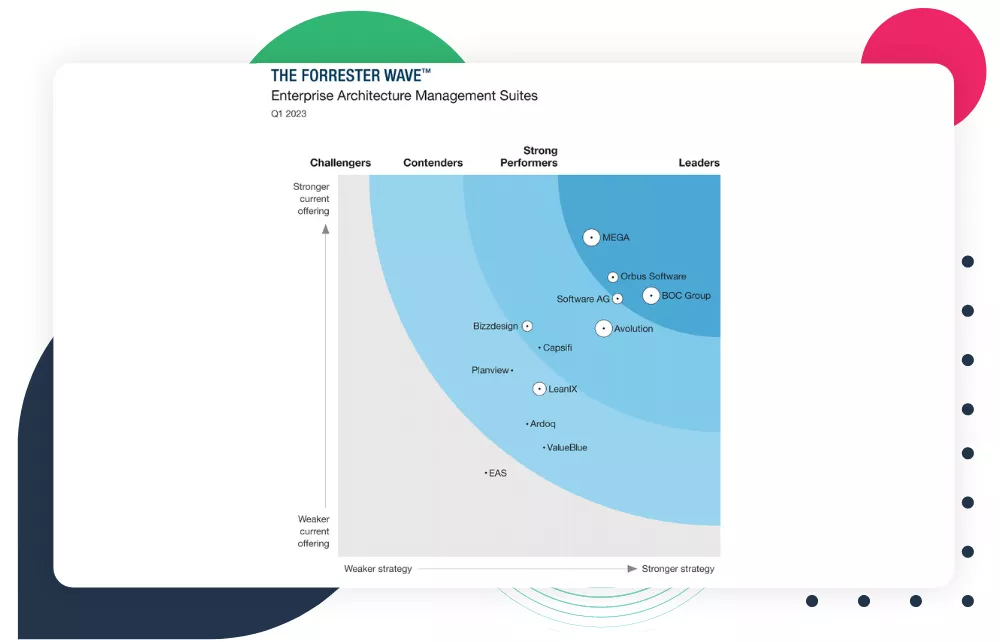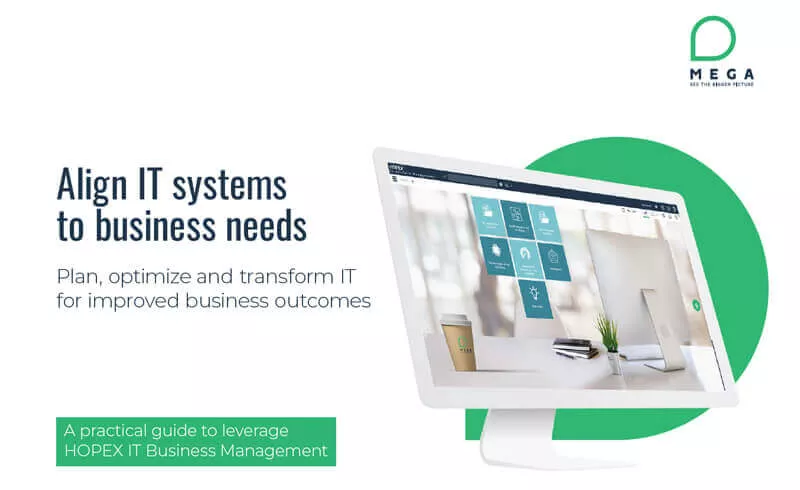Bring Efficiency to IT Operations With Application Rationalization

Application Rationalization is an integral part of modern IT management. It's a process of identifying, evaluating, and categorizing applications within an organization to create a more efficient and cost-effective IT environment. In this article, you will learn about application rationalization and its benefits for large and small organizations when it is successfully implemented. We will guide you through the application rationalization process, including the benefits, challenges, and steps involved.
What is Application Rationalization?
Application rationalization evaluates, manages, and optimizes an organization's applications portfolio. It helps organizations to identify opportunities to improve application scalability and cost savings.
The process includes the following:
- Analyzing the current application landscape.
- Identifying duplicated functionality or redundant applications.
- Mapping out how each application supports business objectives.
By understanding the value of each application and its associated costs, organizations can make informed decisions about what applications should be kept, retired, or replaced to best serve the business's needs. Additionally, it enables organizations to reduce IT complexity and optimize their resources.
It also improves operational efficiency by eliminating unnecessary applications that require costly maintenance and support. Overall, application rationalization helps organizations realize significant cost savings while maintaining a solid foundation of software solutions to meet their goals.
Application Rationalization Sets
Application Rationalization sets typically include several vital steps to help organizations evaluate and streamline their software portfolios. These steps may vary depending on the organization's specific needs but generally include the following;
- Application inventory: This step involves creating a comprehensive inventory of all the applications the organization uses, including their versions, vendors, and associated costs.
- Application categorization: Once an inventory has been established, the applications can be categorized based on their business value, usage frequency, and overall importance to the organization.
- Application rationalization criteria: In this step, specific measures are established for evaluating each application, such as cost, functionality, security risks, and alignment with business objectives.
- Application rationalization analysis: With the criteria established, a thorough investigation is conducted to evaluate each application's value and determine which applications should be retained, replaced, consolidated, or retired.
- Application rationalization roadmap: Based on the analysis, a roadmap outlines a plan for rationalizing the organization's software portfolio, including timelines, budgets, and resource allocation.
- Implementation: Implementation: Finally, the rationalization plan will be implemented, which may involve removing obsolete applications, consolidating duplicate applications, or replacing outdated applications with modern and effective alternatives.
Implementing Application Rationalization
Implementing Application Rationalization can be complex, involving careful planning, analysis, and decision-making. To ensure a successful application rationalization process, it's essential to follow best practices that have proven effective.
Some of these best practices include:
- Define your goals: Before starting the application rationalization process, it's essential to understand the business needs and objectives that drive the organization's software portfolio. This will help ensure that the applications selected for retention or retirement align with the organization's strategic goals.
- Assess your application portfolio: Next, you need to assess your application portfolio to determine which applications are being used, which ones are not, and which ones are duplicates.
- Categorize your applications: Once you have assessed your application portfolio, you need to categorize your applications based on their importance to your organization. For example, you may have mission-critical applications essential to your business operations, while others may be non-essential. This inventory should include information about the application's purpose, functionality, cost, and usage.
- Involve stakeholders in decision-making: The application rationalization process should involve key organizational stakeholders, including IT, finance, and business units. This will help ensure that a broad range informs decisions of perspectives and that all stakeholders accept and support the final decisions.
- Develop a roadmap for implementation: After determining which applications should be retained or retired, the organization should develop a roadmap for implementation. This roadmap should include a timeline, resource requirements, and necessary training or communication to ensure a smooth transition.
- Implement your plan: Based on your assessment and categorization, you can develop a plan for rationalizing your applications. This may include training employees on new applications, retiring outdated applications, consolidating duplicate applications, or replacing non-essential ones with more cost-effective alternatives.
- Monitor and evaluate progress: Finally, monitoring your progress is essential to ensure that your rationalization efforts achieve their desired results. This may involve tracking cost savings, productivity improvements, and security enhancements. This will help ensure that the organization achieves its desired outcomes and that any necessary adjustments are made along the way.
Implementing Application Rationalization requires careful planning, analysis, and decision-making. By following these tips and best practices, organizations can successfully implement it and achieve their desired outcomes.
Application Rationalization Framework
Application Rationalization Framework is a comprehensive approach to application portfolio management that helps organizations identify and prioritize applications within their IT portfolios.
The framework can analyze existing applications, understand how they are used, identify areas of inefficiency, and develop an action plan for application optimization.
It considers technical and business considerations when evaluating each application, allowing organizations to decide which applications should remain active, which ones should be retired or replaced, and what improvements can be made.
Is Application Rationalization Necessary?
Application Rationalization is necessary and critical for organizations that want to optimize their software portfolios, reduce costs, and improve efficiency. There are several reasons why application rationalization is essential:
Benefits of App Rationalization:
The benefits of application rationalization are numerous; it provides several benefits for organizations, including:
- Cost savings: By reducing the number of applications in their software portfolio, organizations can save on licensing fees, maintenance costs, and support services. This can free up the budget for other business needs and reduce overall IT costs.
- Improved productivity: Few applications can create complexity and inefficiencies in workflows, leading to lost productivity and increased costs. By rationalizing applications, organizations can simplify their IT environments, improve workflows, and reduce IT workload, resulting in higher productivity and cost savings.
- Enhanced security: Many applications can increase an organization's attack surface, making it more vulnerable to cyber threats. By rationalizing applications, organizations can reduce the number of potential security risks and better manage their security posture, enhancing security and reducing the likelihood of security incidents.
- Better decision-making: Rationalization can help organizations decide which applications to invest in and which to retire from. An organization's software portfolio may need to align with its current business objectives or priorities. By rationalizing applications, organizations can focus on the most critical applications to achieve their business goals and eliminate those no longer necessary, ensuring that IT investments align with strategic business objectives.
- Simplified IT environment: By consolidating applications and reducing complexity, organizations can simplify their IT environment, making it easier to manage and maintain. This can reduce IT workload and improve IT responsiveness.
- Better compliance: Outdated or legacy applications can become a liability over time, as they may be incompatible with new technologies or unable to support evolving business needs. By reducing the number of applications in use, organizations can more easily achieve compliance with relevant regulations and standards. This can help avoid fines and penalties for non-compliance, freeing resources to invest in more modern solutions and keep up with the latest technologies.
Risk for organizations that do not approach application rationalization
Organizations that fail to implement Application Rationalization face several risks that can impact their competitiveness, financial stability, and overall performance. These risks include:
- Increased IT costs: Without rationalizing applications, organizations may continue to invest in redundant or unnecessary applications, leading to higher licensing fees, maintenance costs, and support services. It can result in higher IT costs and reduced financial stability.
- Decreased productivity: A bloated software portfolio can create complexity and inefficiencies in workflows, leading to lost productivity and increased costs. It could impact the organization's ability to meet business objectives and stay competitive.
- Cybersecurity vulnerabilities: Many applications can increase an organization's attack surface, making it more vulnerable to cyber threats. Outdated or legacy applications may also be more susceptible to security risks, as they may be incompatible with new security measures. It can result in data breaches, reputational damage, and financial losses.
- Difficulty meeting compliance requirements: Organizations that need to rationalize their applications may need help to meet regulatory compliance requirements, leading to potential fines, legal action, and reputational damage.
- Difficulty in managing data: An organization's software portfolio can impact its ability to collect data effectively. Data may be scattered across multiple applications without rationalization, making it difficult to access, analyze, and manage. It can impact decision-making and hinder the organization's ability to leverage data for strategic advantage.
Organizations can mitigate these risks and improve performance and competitiveness by implementing Application Rationalization.
Overcoming the Biggest Challenges of Rationalization
While Application Rationalization can benefit organizations significantly, it also comes with significant challenges. Here are some of the biggest challenges that organizations may face during the Application Rationalization process:
Lack of visibility
One of the biggest challenges of application rationalization is the need for more visibility in the organization's application portfolio. Organizations may have many applications developed by different teams and need more accurate and up-to-date information on each application's usage, cost, and value.
Resistance to change
Another challenge is the resistance to change that can arise from organizational stakeholders. Employees may be attached to specific applications or processes and want to avoid seeing them retired or consolidated.
Limited resources
Application Rationalization can be a resource-intensive process requiring significant time, effort, and expertise. Smaller organizations with limited resources may need help to undertake this effort effectively.
Technical complexity
Rationalizing applications may involve technical challenges such as integrating systems, updating software, or migrating data. These technical challenges can be complex and require specialized knowledge and expertise.
Organizational silos
Application Rationalization requires collaboration between different departments, such as IT, finance, and business units. However, silos within organizations hinder effective collaboration, slowing the rationalization process.
Unforeseen issues
Rationalizing applications can reveal unforeseen issues not anticipated during the planning phase. For example, some applications may be more interconnected than initially thought, making it challenging to retire them without impacting other systems.
Organizations need to be aware of these challenges and have a plan to address them as they undertake the rationalization process.
Transform Your Workflow with the Right Tools
Implementing Application Rationalization can be complex, and organizations must have the right tools to support their efforts. One practical approach is using an integrated IT portfolio management tool with Application Rationalization capabilities. Here are some benefits of using such a tool:
- A comprehensive view of the IT portfolio: An integrated IT portfolio management tool provides a holistic view of an organization's IT portfolio, including applications, infrastructure, and other assets. This enables organizations to understand the relationships between different components better and identify opportunities for optimization.
- Improved decision-making: Organizations can make data-driven decisions about which applications to retain or retire using an integrated IT portfolio management tool. These decisions are based on extensive usage, cost, risk, and business value analysis.
- Increased efficiency: An integrated IT portfolio management tool automates many tasks involved in Application Rationalization, such as application inventory and usage tracking. This can save time and resources and improve efficiency.
- Better collaboration: An integrated IT portfolio management tool enables collaboration between IT, finance, and business units. This can help ensure that a broad range informs decisions about the Application Rationalization of perspectives and that all stakeholders accept and support the final decision.
- Reduced risk: An integrated IT portfolio management tool can help reduce the risk of security vulnerabilities and compliance issues by identifying and retiring legacy or redundant applications.
An integrated IT portfolio management tool that includes Application Rationalization capabilities can provide organizations with a comprehensive view of their IT portfolio, improve decision-making, increase efficiency, enable better collaboration, and reduce risk.
Partnering with an experienced consultant or SAAS provider can help ensure that the process is successful and that your organization achieves its desired outcomes.
Summary
In conclusion, application rationalization has the potential to revolutionize your business. It can help you reduce costs, optimize processes, and increase agility while enabling you to manage your applications better. By applying the best practices outlined in this article, you will be on your way to modernizing your IT infrastructure and taking advantage of the new opportunities that come with it.
The future of application rationalization is bright: as technology evolves, so does its potential for success.
Answers to frequently asked questions
Rationalizing an application is understanding why it exists and how it works. It involves examining the code, data, and other components to uncover hidden dependencies or flaws that could cause issues in the future. This process also helps identify improvement areas, such as better performance or improved security measures. To rationalize an application, one must first analyze its structure and purpose and then evaluate its design and architecture for potential risks or weaknesses. Additionally, one should research the available documentation to understand how the application works and its components interact fully. Finally, one should test the application's functionality to ensure it meets all requirements.
Application rationalization is managing and optimizing the applications used within an organization. It helps organizations become more efficient and cost-effective by reducing the number of applications, streamlining processes, and eliminating redundant or obsolete software. The benefits of application rationalization include increased efficiency, improved security, reduced complexity, and cost savings.
Application rationalization for cloud migration is evaluating and optimizing an organization's applications before they are moved to the cloud. This process involves analyzing the application portfolio, identifying applications that can be migrated to the cloud, assessing their performance and scalability requirements, and understanding their dependencies.
When an organization needs to do application rationalization, they put themselves at risk of having outdated software that is no longer secure or supported. Additionally, with application rationalization, organizations can benefit from the cost savings and operational efficiencies of streamlining redundant systems and applications. With this process, organizations can identify which applications are most critical for their operations and which can be eliminated to free up resources for more important tasks. Not only does this reduce the organization's efficiency, but it also increases the risk of data breaches due to running obsolete software.
Application rationalization is the process of critically assessing, evaluating, and classifying existing applications within an organization. It helps organizations identify which applications are essential, redundant, or obsolete. This process involves looking at various aspects of each application such as its cost, usage, security requirements and performance.
Increase visibility and rationalize your IT portfolio with APM
MEGA HOPEX for Enterprise Architecture
Request a demonstration of HOPEX for EA, and see how you can have immediate value of your projects.



